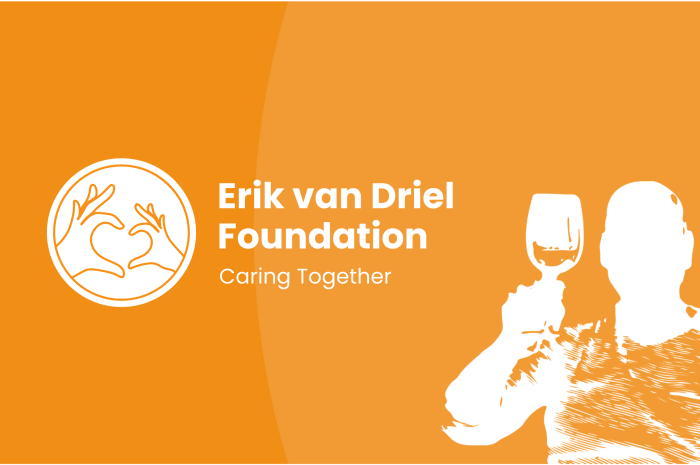On 15 June 2021, I chatted to Henri Kuijl about the subject of citizen development. Henri Kuijl is a project manager and citizen developer (PMI certified practitioner). In collaboration with a team from The Citizen Development Network, he helps Dutch businesses to apply the PMI method.
Sharing knowledge and experiences of citizen development helps companies to familiarize themselves with the concept. By doing so, it makes it more accessible and helps companies to hit the ground running. During the interview, I shared my vision on citizen development and the application of low-code/no code platforms.
“There has to be a better way”
Good afternoon, Joost, thank you for taking the time to talk to me today. Here at The Citizen Development Network, we interview people in IT and business roles who have experience with citizen development or have a vision on it based on their expertise. The goal of the interviews is to collect experiences as well as dos and don’ts when it comes to citizen development.
Could you briefly introduce yourself and tell us a little bit about Broad Horizon and your role within the organization?
I’m an innovation manager at Broad Horizon. I advise clients and colleagues about new technologies. I translate new technologies into a business context and advise on the best way to use these technologies. Broad Horizon is what we call a data and technology company that, as a Microsoft Partner, delivers services based on the Microsoft portfolio. We mainly focus on four areas: Data and AI, Business apps, the Modern Workplace, and Cloud and Infrastructure. Broad Horizon comprises several business units with 750 employees and is growing rapidly, especially on an international level as a result of acquisitions. Our clients are active in the healthcare, education, and retail sectors, among others, but ISVs (Independent Software Vendors) also make use of our services.
How did you get involved with citizen development?
As a Microsoft partner, we supply Microsoft’s low-code platform, the MS Power Platform. It’s how we help companies to accelerate their digitalization process. Citizen development is a key area for Broad Horizon. I host the ‘Power Platform in a Day’ workshop, which is based on the Microsoft Power Platform. During this workshop, employees involved in business processes and from the IT department learn how to build an app to automate the process of requesting a new laptop. This appeals to people because, at many companies, this process could be a lot easier and more convenient.
How would you define citizen development?
Citizen development is a completely new way of developing software. In the past, five employees at the IT department used to develop your idea; now you can do it yourself. At the moment, low-code/no-code is often used as a solution for the IT department, but you only really have citizen development when the development actually takes place in the business.
Could you tell us a bit about your experience with citizen development?
In the ‘Power Platform in a Day’ workshop, employees – who we then call citizen developers – build an application on their own. I show them how to build an app themselves. By the end of the day, they have developed their own app and are proud of the result. This is hugely important, because employees are reluctant to start using Power apps. The workshop lets them experience what it’s like to develop an application with low code, so they become less hesitant. I also teach them that it’s a fundamentally different way of solving problems.
It’s no longer a case of, ‘the IT department doesn’t have time to work on your idea’. Instead, they can now do it themselves.
Do the companies where you hold the workshop have a need for citizen development?
I am sometimes surprised that there is still little appetite for citizen development. In the workshop, I mention four reasons to start using low-code/no-code:
- Innovation – try new things quickly
2. Achieve chain integration – exchange information with customers and suppliers
3. Modernize legacy and customization
4. Improve productivity.
And then I ask them, ‘What could be done smarter/better?’, and then the ideas come flowing in as to where citizen development with low-code/no-code could be a good solution.
There is often a clear need, but the companies at which I held the workshop were still looking for ways to make it happen.
In this phase of the market, I think a lot of time needs to be spent on creating awareness.
In your opinion, where in the organization should citizen development actually start?
Essentially, all IT should start from the business. IT is there to serve the business process, so it’s important that you always start from the top, the management. Citizen development should always start in the business, by collecting ideas based on the mantra: ‘there has to be a better way of doing this’.
What comes first, citizen development or a low-code/no-code platform?
A low-code/no-code platform facilitates citizen development. And, in turn, citizen development facilitates the acceleration of digital transformation within your organization.
What would you use citizen development for?
Citizen development is a key factor when it comes to accelerating digital transformation and, perhaps even more importantly, freeing up more time for employees to do their jobs and not be obstructed by unnecessary actions in the process.
However, citizen development does require a strong foundation. You shouldn’t use it if, for example, there are multiple versions of reality within the company and everyone uses their own database (e.g. multiple product files). Using low-code/no-code will actually then be counterproductive. In such cases, you first need to improve unity and centralize your data. Also, if there is an insufficient overview of processes and if these processes are not sufficiently standardized, citizen development and low-code/no-code simply won’t gain any traction.
What do you think is the best way to approach citizen development?
When advising my clients, I always make clear that citizen development is not a silver bullet – it won’t solve everything. The low-code/no-code approach makes some things more difficult. Rather than comparing low-code/no-code to Lego bricks, I compare it to an Ikea cabinet. Sometimes you’re not quite sure how to insert the screws. And sometimes you’ll have finished putting everything together, only to realize that a plank is in the wrong place, so you have to go back several steps and do it all over again.
Start collecting ideas from within the business, based on the mantra ‘there must be a better way’.
1. It is vital that the management sees the opportunities and issues a mandate and budget.
2. Then you choose a low-code/no-code platform
3. The IT department sets up the chosen platform, including the governance structure.
4. Then you can start rolling it out, preferably starting in one department.
5. If this is successful, you can then identify the areas within the company where the next step can be taken.
Is low-code/no-code an effective way to stimulate cross-functional cooperation?
Cross-functional cooperation isn’t a goal in itself; it’s an absolute must for citizen development. With good cross-functional cooperation in what we nowadays call ‘fluid teams’, you can make rapid progress that benefits everyone. So, it’s a key component when it comes to developing any citizen development programme.
Low-code/no-code is great for fostering a culture of innovation, where people feel free to experiment and make mistakes. Do you share this view?
I think it actually goes a step further than that. People become more proactive when they make an app themselves and solve their own problem, because it creates a demand for even more and even better solutions. In turn, this helps to accelerate digital innovation. So, you move from experimenting and learning from mistakes to becoming more productive, and from becoming more creative to becoming more productive.
Once you’ve decided to delve into citizen development, how do you decide which department and which employees to involve in the process first?
You essentially have to choose an adoption strategy – not unlike, for example, when you want to roll out MS Teams and introduce the new way of working. So, look for the people who are open to it and have an affinity with it. The level and background of employees also plays a role. For example, employees who like to tinker with things in Excel are good candidates.
You also have to realize that it’s not a one-size-fits-all solution and that, as a company, you need to think carefully about what you want to solve with it before you actually get started. I always ask, ‘If low-code/no-code is the answer, what is the question?’.
What do you think is the best way to implement citizen development in cooperation with the IT department?
It’s important to realize beforehand that introducing citizen development will create a certain amount of tension between the IT department and employees involved in the business process. IT people are responsible for security and stability and are therefore very cautious about opening up software development and granting access. Business employees are often skeptical because ‘the IT department always says that it’s not possible, it takes too long, and nothing is ever allowed’. Which is why it’s important that both sides are involved in shaping the citizen development programme right from day one. Then they will discover that they both have the same goal – even if they approach it from different perspectives.
A low-code/no-code platform is therefore a great way to bring both sides together. It’s also important to develop the skills of IT staff as they take on a more coaching and Q&A role.
In other words, it’s about zooming in on and eliminating this mistrust. Only then will citizen development succeed.
How do you help your clients get started with citizen development?
I start by doing an impact analysis. Citizen development is so much more than just tooling; it’s about giving people confidence. It’s also about daring to let things develop from the bottom up. So, it also has a bearing on culture and management style. Analysing the ‘Organization’, ‘People’, and ‘Technology’ axes provides insights into a company’s current situation and its ambitions. This then determines the scope and impact of what you are going to do with citizen development.
Depending on the client’s request, we build the application ourselves or we assist citizen developers. In doing so, we help the company to lay the technical foundations and put together a team of business employees to get involved in the development.
We also support our clients with any follow-up issues or questions that may arise. Introducing low-code/no-code affects the choices to be made when it comes to automating processes. Previously, people tended to stick to either a standard ERP system in which all departments work with the same data and where there is a single version of reality, or a best-of-breed application landscape in which each department is assigned the most appropriate functionality and the data is exchanged in the background. Now you can work with one application and one database, and at the same time adapt the applications to the individual requirements of a department, process, or branch, etc. without having to use an additional system. This is the strength of the Microsoft Power Platform.
Are there any things that we haven’t mentioned yet or that have crossed your mind during this interview?
We’ve already touched on it briefly, but expectation management is hugely important. People are used to getting things that meet their exact needs. The great thing about low-code/no-code platforms is that they give you standard building blocks. But that means that the solution may not meet specific needs. Find the balance – don’t try to accommodate 100% of the detailed requirements and wishes.
“With a low-code/no-code platform, the user gets something quickly and the IT department can make sure it works properly and is secure.”
My advice would be to maintain high requirements and see which building blocks you can use and how they can most effectively support the process. Don’t come up with a functional design only to find out afterwards that something can’t be done. Instead, keep things at the user-story level and start building right away.



